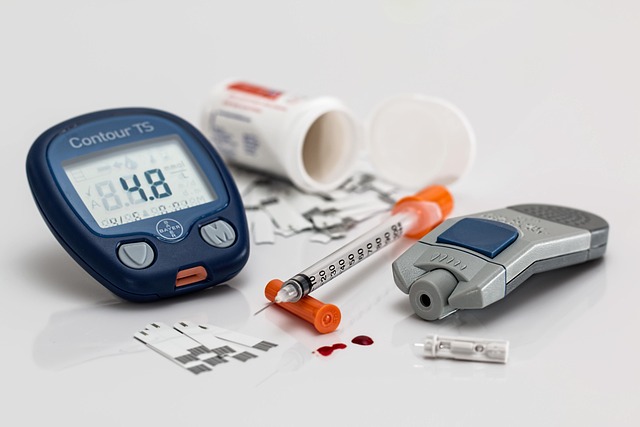Government-Backed Glucose Monitoring Programs - Exploring Health Innovations
Government initiatives are transforming diabetes care through comprehensive glucose monitoring programs. These programs provide essential resources, equipment, and support to help individuals manage their blood glucose levels more effectively. By combining public health objectives with technological advances, these initiatives aim to reduce healthcare costs while improving patient outcomes across diverse populations.

Diabetes affects millions of people worldwide, creating significant challenges for both individuals and healthcare systems. Government-backed glucose monitoring programs have emerged as innovative solutions that bridge the gap between medical necessity and accessibility. These comprehensive initiatives leverage public resources to provide essential monitoring equipment, educational support, and ongoing care coordination to eligible participants.
Understanding Government-Backed Glucose Monitoring Programs
Government-backed glucose monitoring programs represent systematic approaches to diabetes management funded through public health initiatives. These programs typically provide participants with glucose monitoring devices, test strips, and educational resources at reduced or no cost. The programs operate through partnerships between government agencies, healthcare providers, and medical device manufacturers to ensure sustainable access to essential monitoring tools.
Most programs focus on preventive care and early intervention strategies. They often include comprehensive screening processes, regular health assessments, and coordinated care plans that extend beyond simple device distribution. The integration of digital health technologies and data collection systems enables program administrators to track outcomes and adjust services based on participant needs.
Benefits of Participating in Glucose Monitoring Programs
Participation in government-sponsored glucose monitoring programs offers numerous advantages for individuals managing diabetes. Primary benefits include access to high-quality monitoring equipment without significant financial burden, comprehensive educational resources about diabetes management, and ongoing support from healthcare professionals.
Programs frequently provide participants with continuous glucose monitors or traditional blood glucose meters, along with sufficient testing supplies for regular monitoring. Many initiatives also include smartphone applications or digital platforms that help users track their readings, identify patterns, and share data with healthcare providers. This technological integration enhances the overall effectiveness of diabetes management strategies.
Additional benefits often encompass nutritional counseling, exercise guidance, and medication management support. Some programs offer group sessions or peer support networks that create communities of individuals facing similar health challenges. These comprehensive approaches address not only the technical aspects of glucose monitoring but also the emotional and social dimensions of living with diabetes.
Eligibility Criteria for Program Participation
Eligibility requirements for government-backed glucose monitoring programs vary by jurisdiction and specific program design. Common criteria include confirmed diabetes diagnosis, income thresholds, insurance status, and residency requirements. Many programs prioritize individuals with limited financial resources, those without adequate insurance coverage, or members of underserved communities.
Age requirements may apply, with some programs specifically targeting seniors, while others focus on working-age adults or families with children who have diabetes. Healthcare providers typically need to verify medical necessity and provide documentation supporting the participant’s need for glucose monitoring equipment.
Some programs require participants to complete educational components or attend regular check-ins with healthcare providers. These requirements ensure that individuals receive comprehensive support and can effectively utilize the monitoring equipment provided through the program. Geographic restrictions may also apply, limiting participation to residents of specific states, counties, or healthcare districts.
How to Apply for a Glucose Monitoring Program
The application process for government-backed glucose monitoring programs typically begins with contacting local health departments, community health centers, or program administrators. Many programs maintain online portals where potential participants can access application forms, eligibility requirements, and program information.
Required documentation usually includes proof of diabetes diagnosis from a healthcare provider, income verification, insurance information, and identification documents. Some programs require completion of health assessments or consultations with program staff before approval. Processing times vary, but most programs aim to provide decisions within several weeks of receiving complete applications.
Once approved, participants typically receive orientation sessions that cover device usage, data management, and program expectations. Many programs assign case managers or health educators who provide ongoing support throughout participation. Regular follow-up appointments or check-ins help ensure that participants are successfully using the monitoring equipment and achieving their health goals.
| Program Type | Provider | Coverage | Estimated Monthly Value |
|---|---|---|---|
| Federal Medicare Program | Centers for Medicare & Medicaid Services | Glucose meters and strips | $75-150 |
| State Medicaid Programs | Various State Agencies | Comprehensive monitoring supplies | $100-200 |
| Community Health Initiatives | Local Health Departments | Basic monitoring equipment | $50-100 |
| Pharmaceutical Assistance Programs | Major Device Manufacturers | Discounted or free devices | $80-175 |
Prices, rates, or cost estimates mentioned in this article are based on the latest available information but may change over time. Independent research is advised before making financial decisions.
Future Directions of Glucose Monitoring Programs
The future of government-backed glucose monitoring programs is increasingly focused on technological integration and personalized care approaches. Emerging trends include the adoption of continuous glucose monitoring systems, artificial intelligence-powered data analysis, and integration with electronic health records. These advances promise to enhance the precision and effectiveness of diabetes management while reducing long-term healthcare costs.
Telemedicine integration is becoming a standard feature of many programs, allowing participants to receive remote consultations and support. Mobile health applications are evolving to provide real-time feedback, predictive analytics, and personalized recommendations based on individual glucose patterns and lifestyle factors.
Policy developments are also shaping program evolution, with increased emphasis on health equity and accessibility. Future programs are likely to incorporate social determinants of health, addressing factors such as food security, transportation access, and housing stability that significantly impact diabetes management outcomes.
Government-backed glucose monitoring programs represent a crucial intersection of public health policy and technological innovation. As these programs continue to evolve, they offer promising pathways for improving diabetes care accessibility while addressing the growing healthcare challenges associated with this chronic condition. The success of these initiatives depends on continued collaboration between government agencies, healthcare providers, and the communities they serve.
This article is for informational purposes only and should not be considered medical advice. Please consult a qualified healthcare professional for personalized guidance and treatment.




